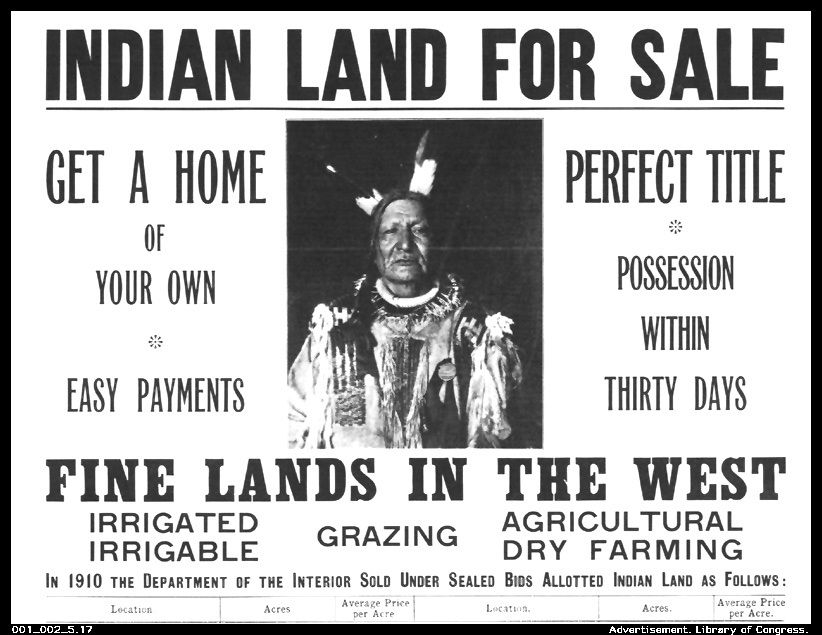The General Allotment Act (Also known as the Dawes Act) A Law passed by the U.S. Congress in 1887
This is a shortened version of the original legislation. It has been re-written in simpler language than the original:
This is a law to end the independence of Indian tribes and make them part of the United States laws. And to divide Indian reservation lands into separate pieces for individual Indians. And for other purposes. Indian
reservations that are determined to be good for farming or raising livestock shall no longer be owned by the tribes that live on them. Instead, the reservation land is to be divided up and each family in the tribe is to be given 160 acres, with single people and orphans to receive 80 acres each. After the tribe members have received their land pieces, there may be extra land leftover on the reservations. This leftover land may be sold to non-Indians.
Once the Indians receive their land allotments, they will be United States citizens.
February 8, 1887 United States Statutes at Large, XXIV, 388-91.
Write: A short summary of the Dawes Act in your own words, in one or two sentences.

